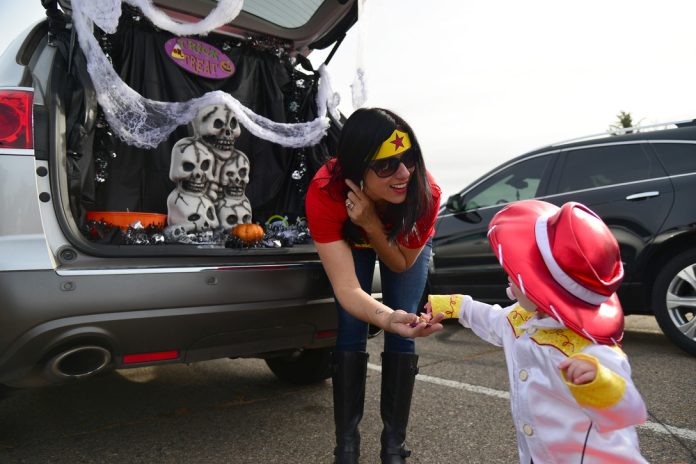As American families abandon traditional trick-or-treating for “safer” alternatives like Trunk-or-Treat, a rare opportunity for neighborhood community engagement is lost.
Halloween collects its more than its share of ghoulish stories. From murder to poisoning, the media loves to capitalize on the real-life horrific activities that occur on and around Halloween. Case in point, this year’s sensational story about a five-year-old boy in Ohio, who was exposed to methaphetamine, not by eating candy, but by wearing a pair of tainted vampire teeth.
Of course it had to be teeth. The irony is as delicious as a piece of Halloween candy.
But, there is also a deeper irony at play here. On the one holiday in which Americans both confront and celebrate their fears, they also fixate on safety and obsess over danger like on no other holiday.
Bad things, terrible things, happen every year on Christmas, yet the holiday doesn’t collect tales of terror. What about Independence Day? Between food poisoning, firework accidents, and drunk driving, July 4th easily takes the title for the most dangerous holiday in America.
Even so, there have been little change in the traditions and customs that surround the 4th, whereas with Halloween there has been a steady shift, specifically around trick-or-treating. Once such a mainstay of American culture that its arrival in countries like France was decried as American cultural imperialism, trick-or-treating has declined precipitously in the US.
Halloween hysteria, which began in the 1980’s, has taken a toll. While hospitals may no longer offer to X-ray candies–a practice that was abandoned after no dangerous substances were ever detected–the American public remains convinced that trick-or-treating, is dangerous.
Yet, according to Joel Best, a professor of sociology and criminal justice at the University of Delaware who began studying “Halloween sadism” in 1981, and has updated his study to include every year from 1958 to the present, there is no evidence to back up these fears.
“In truth, there was not one case of a child killed or hurt by Halloween candy received from an anonymous stranger. What cases were reported were always debunked. But it’s become legend. And why? Because we don’t believe in ghosts and goblins on Halloween. We believe in criminals.”
Professor Joel Best
Is trick-or-treating a dying custom?
According to the National Retail Federation’s 2017 Halloween report, only about 30 percent of Americans planned to celebrate Halloween with trick-or-treating.
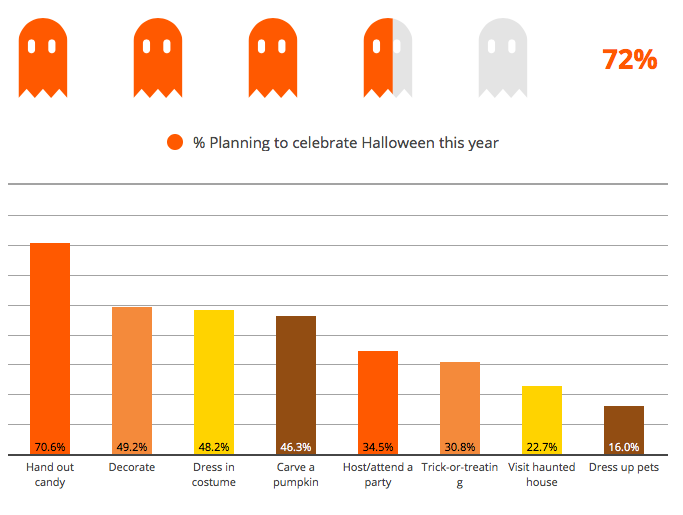
This is part of a longer standing decline in trick-or-treating. Between 2011-2015, the amount of parents planning to take their children trick or treating declined from 52 to 48 million.
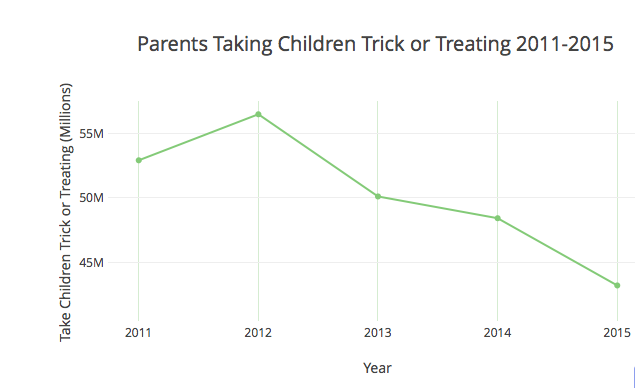
This has occurred even as the amount of spending on Halloween has continued to increase from $8.4 billion in 2016 to $9.1 billion in 2017. Current projections for 2018 put the spending at $9 billion again.
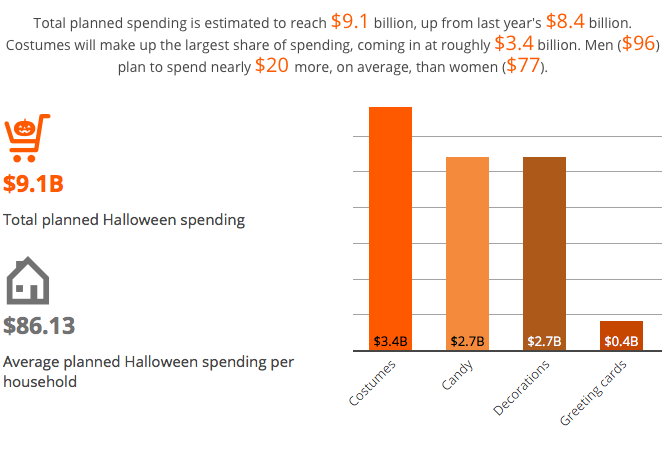
Americans are still crushing it when it comes to one Halloween activity. In 2018, more than 95% of the people surveyed planned to purchase candy. This is by far the highest rate of participation of any Halloween activity.
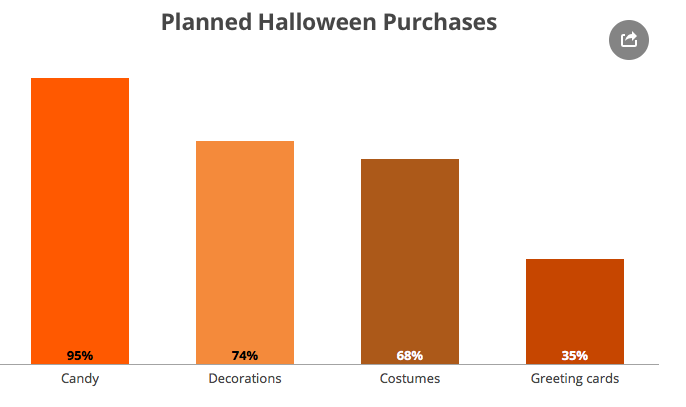
The discrepancy between the amount of candy being purchased and the decline of trick-or-treating is considerable. So where is all this candy going other than into the mouths of purchasers?
What is Trunk-or-Treat?
Also, known as “Halloween Tailgating,” Trunk-or-Treat has emerged in recent years as a competitor to traditional trick-or-treating across the United States. In the Seattle metro area alone this year, over 20 Trunk-or Treat events are taking place. From Bellevue to Mill Creek, Tacoma to Normandy Park, a host of organizations, many of them faith-based, have organized Trunk-or-Treat events. And it is not only a suburban practice, Trunk-or-Treat events have been scheduled in the Seattle neighborhoods of Phinney Ridge and West Seattle Junction as well.
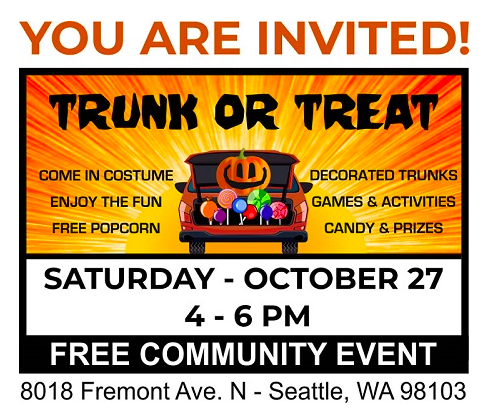
Trunk-or-Treat is exactly what it sounds like. Instead of walking from house to house, children are taken to a parking lot where they go from car to car collecting candy. The cars are decorated with Halloween themes. Often the participants are screened in advance to increase safety, and only sealed, packaged food is permitted to be distributed at the event, which is usually sponsored by an organization with a large parking lot.
Advocates for Trunk-or-Treat promote its increase safety and convenience. “This is a way to celebrate Halloween with the whole family without any of us parents having to worry about whose house our kid is going to, or if the kid will get hit by a car or get lost in the woods,” M. J. Martin said in an interview with the New York Times.
Others prefer Trunk-or-Treat because of its convenience and predictability. Unlike traditional trick-or-treating, parents do not have to walk long distances with children, and RSVP policies help ensure that there is plenty of candy for all of the children who attend.
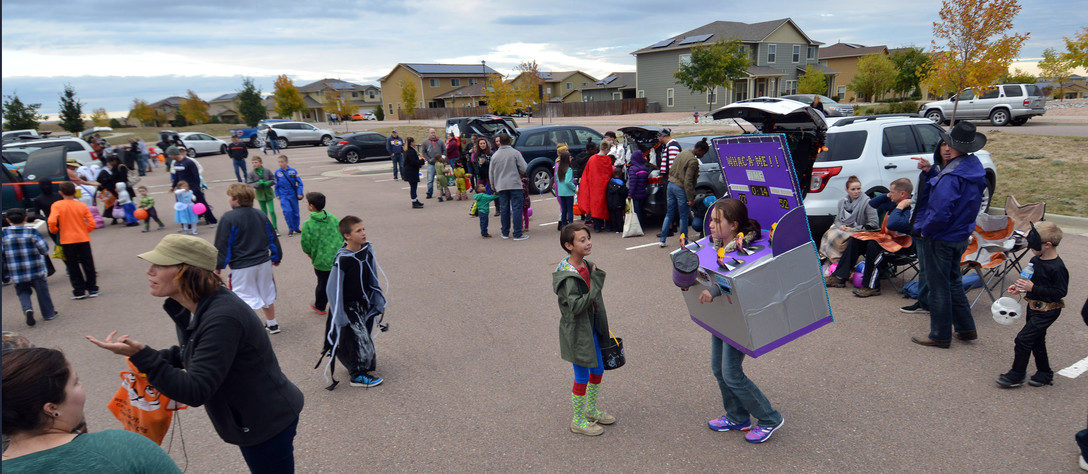
However, there are also a fair amount of Trunk-or Treat critics, like Lenore Skenazy, author of the blog, “Free Range Kids.”
[Trunk or Treat] assumes the holiday is simply about amassing free food. Trunking… also subtly suggests that kids are in peril walking up to any neighbor’s porch. This reinforces the community-killing idea that kids aren’t ever safe outside the home, school, or supervised program. Sure, it’s “communal” to hold a Trunk event, and even fun. But because it is so removed from regular life, it doesn’t translate into, ‘Now that I’ve walked all around my neighborhood, I think I’ll walk over to Gabe’s house to play.’ It’s just another adult-led activity.
Lenore Skenazy
A Rare Opportunity for Community Engagement Is Being Lost
Jennifer Fliss, a New York native, has fond memories of trick-or-treating in her apartment building and other close-by buildings from her 1980’s childhood. “From about the age of seven [or] eight, maybe even younger, we would go trick-or-treating by ourselves,” she said. “And because we were mostly in apartment buildings, we didn’t have to worry about the weather. It was really fun. We would get a lot of candy.”
Now Fliss lives in North Seattle with her husband and young daughter. Even though rain is on the forecast this Halloween, she plans to take her daughter trick-or-treating in her neighborhood.
“We are lucky to live in a really “Mayberry” neighborhood where almost everyone on our block participates,” she said. “It’s a rare opportunity for us to engage as a community. In American culture we don’t have a lot of other events like trick-or-treating. Neighborhood Night Out block parties are fun, but they are not as deeply instilled in American culture as Halloween is.”
Fliss sees the community engagement that results from trick-or-treating as having another added benefit: increased safety for her young daughter.
“Because we know our neighbors I’ve been able to tell my daughter who to go to nearby in case of an emergency. It’s incredibly helpful,” said Fliss. “Trick-or-treating makes it easier for her to know who lives in what house, and to feel more comfortable going there to ask for help.”
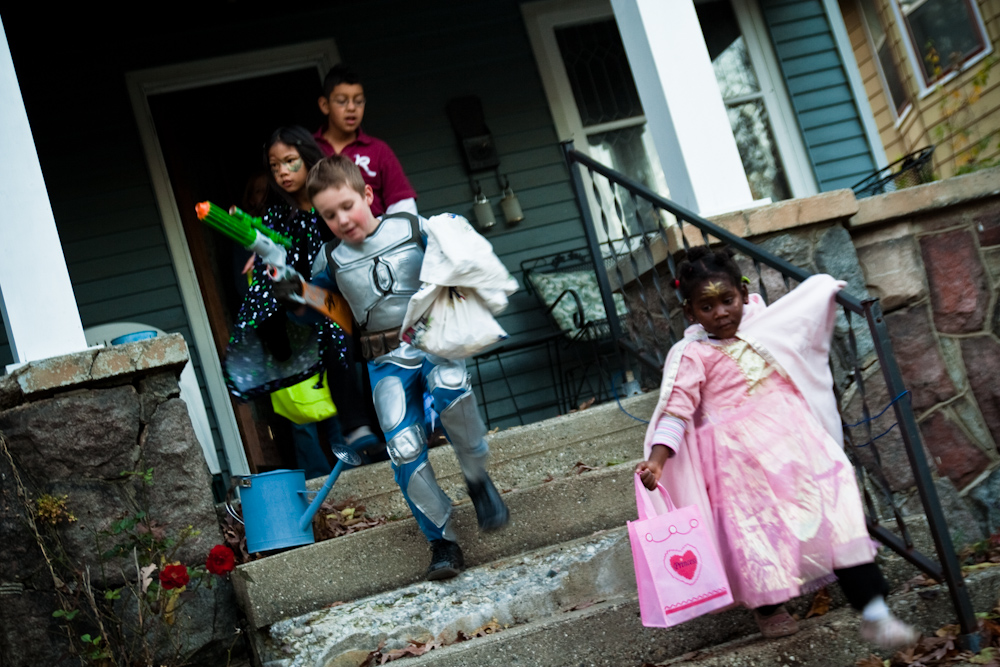
Of course, being able to confidently and comfortably ask your neighbor for help in an emergency situation is incredibly beneficial, and could be life-saving in certain situations; however, studies have also shown that connections between neighbors bring powerful mental and physical health benefits.
For instance, in 2014 CityLab reported on a study that analyzed social connectedness and risk of heart attack. The study was published in the Journal of Epidemiology and Community Health and found that participants who lived in the areas identified as having the most social cohesion had a 67% less chance of having a heart attack than those who lived in areas with low social cohesion.
In the study, social cohesion was identified as geographic or neighborhood based. Participants responded questions that gauged how connected they felt to their communities such as:
- “I really feel part of this area.”
- “If [I] were in trouble, there are lots of people in this area who would help.”
- “Most people in this area can be trusted.”
- “Most people in this area are friendly.”
According to Eric Kim, a psychologist interviewed in the article, the reduction in risk of heart attack associated with living in a high social cohesion area may result from sharing health-related information, lending money and sharing resources, and “eyes on the street.”
“Since I’m a psychologist,” Kim said, “I also really believe in how helpful emotional support can be in buffering against the toxic effects of stress.”
While activities like Trunk-or-Treat, or even other alternatives such as the increasingly popular “mall trick-or-treat,” offer children the opportunity to have guaranteed fun in a safeguarded environment, the holistic benefits of trick-or-treating which result from neighborhood communities rallying together to create a fun, safe, and memorable experience are being lost. The sad part is that these holistic benefits would continue long beyond the Halloween holiday.
As trick-or-treating has declined, so has Americans’ general engagement with neighbors. According to the Boston Globe, in 1974, 30 percent of Americans spent time with their neighbors more than once a week, and just over 20 percent never spent time with their neighbors.
Now the situation has reversed itself. Almost 35 percent of us never spend time with neighbors, while less than 20 percent do so more than once a week.
While the threat of tainted candy might be a hoax, threats resulting from social isolation and loss of community cohesion remain very real for millions of Americans. That might be the real horror story of the Halloween season.
Natalie Bicknell Argerious (she/her) is a reporter and podcast host at The Urbanist. She previously served as managing editor. A passionate urban explorer since childhood, she loves learning how to make cities more inclusive, vibrant, and environmentally resilient. You can often find her wandering around Seattle's Central District and Capitol Hill with her dogs and cat. Email her at natalie [at] theurbanist [dot] org.

